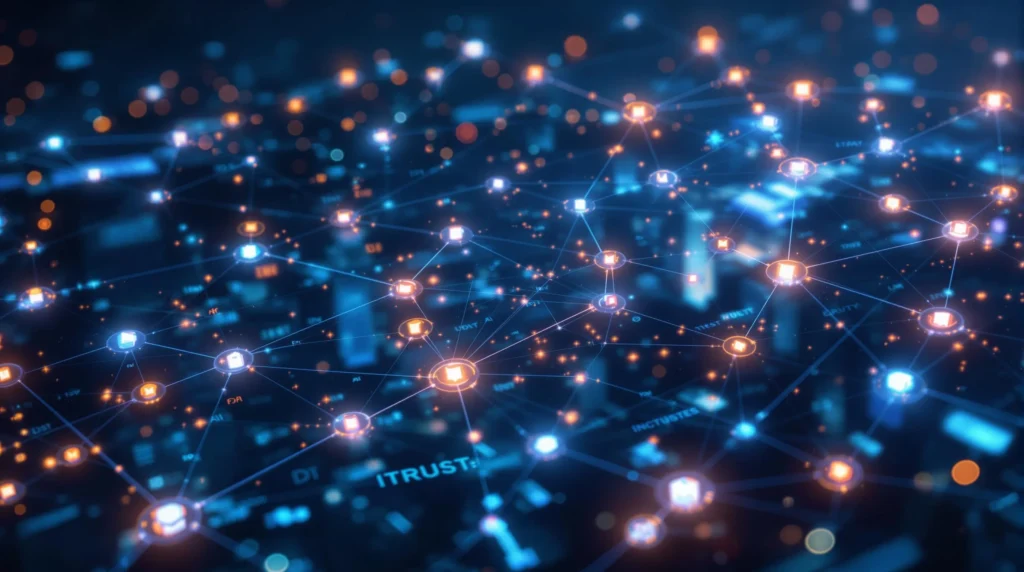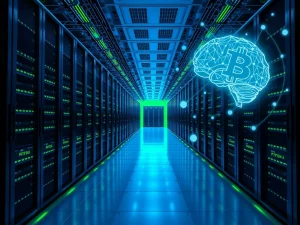Unlocking Secure Growth: How DeFAI Scales Safely in the Age of AI

The fusion of Decentralized Finance (DeFi) and Artificial Intelligence (AI), often dubbed DeFAI, is rapidly transforming the cryptocurrency landscape. Imagine AI agents working seamlessly within DeFi protocols, enhancing efficiency, automation, and user experience. This is the promise of DeFAI. But with this incredible potential comes a critical question: How can DeFAI scaling be achieved safely and securely in this age of advanced AI?
Understanding the Rise of DeFAI and the Need for Secure Scaling
DeFAI represents a paradigm shift, moving beyond basic smart contracts to incorporate sophisticated AI models within decentralized frameworks. This evolution brings numerous benefits, such as intelligent asset management, personalized investment strategies, and enhanced risk assessment within DeFi platforms. However, as DeFAI adoption grows and these systems become more complex, the need for robust security measures becomes paramount. Think about it – the more powerful and integrated AI becomes within DeFi, the greater the potential risks if vulnerabilities are exploited. DeFAI scaling isn’t just about expanding capacity; it’s about ensuring this expansion is built on a foundation of trust and resilience.
What are the Key Challenges to Secure DeFAI Scaling?
Scaling DeFAI safely isn’t a walk in the park. Several significant challenges need to be addressed proactively. Let’s break down some of the most pressing concerns:
- AI Hallucinations and Data Integrity: AI models, especially large language models, are prone to “hallucinations” – generating outputs that are factually incorrect or nonsensical. In a DeFi context, relying on hallucinated information could lead to disastrous financial decisions. Ensuring data integrity and model accuracy is crucial for DeFi security.
- Systemic Failures and Interoperability Risks: As DeFAI ecosystems become more interconnected, the risk of systemic failures increases. A vulnerability in one AI-driven protocol could potentially cascade and impact the entire network. Furthermore, ensuring seamless interoperability between different DeFAI platforms while maintaining security is a complex challenge.
- Smart Contract Vulnerabilities Amplified by AI: Traditional smart contract vulnerabilities can be exacerbated by AI integration. If an AI agent interacts with a flawed smart contract, it could unintentionally trigger exploits or amplify the impact of existing weaknesses. Rigorous auditing and formal verification of both smart contracts and AI models are essential.
- Governance and Decentralization Dilemmas: Maintaining decentralization while integrating complex AI systems presents governance challenges. How do we ensure that AI decision-making remains transparent, auditable, and aligned with the principles of decentralization? Striking the right balance between AI efficiency and decentralized control is a key aspect of decentralized AI development.
- Regulatory Uncertainty and Compliance: The regulatory landscape for both AI and crypto is still evolving. DeFAI projects must navigate this uncertainty and ensure compliance with emerging regulations. This includes addressing data privacy concerns, algorithmic bias, and potential misuse of AI in financial contexts.
Strategies for Achieving Secure DeFAI Scaling
Despite these challenges, there are proactive strategies that can pave the way for secure DeFAI scaling. Focusing on robust development practices, advanced security measures, and community-driven governance is key.
Building Robust and Audited AI Models
The foundation of secure DeFAI lies in the reliability of its AI models. This involves:
- Rigorous Model Training and Validation: Employing diverse and high-quality datasets for training AI models is crucial to minimize bias and improve accuracy. Extensive validation and testing are necessary to identify and mitigate potential weaknesses.
- Explainable AI (XAI) Techniques: Implementing XAI methods allows for greater transparency into AI decision-making processes. Understanding why an AI model makes a particular decision is vital for debugging, auditing, and building trust in AI in DeFi.
- Formal Verification of AI Algorithms: Applying formal verification techniques to AI algorithms can provide mathematical guarantees about their correctness and security properties. This is particularly important for critical components within DeFAI protocols.
Enhancing DeFi Security Infrastructure for AI
Strengthening the underlying DeFi infrastructure to accommodate AI integration is equally important:
- Advanced Smart Contract Security Audits: Beyond traditional audits, specialized audits focusing on AI-smart contract interactions are needed. These audits should assess potential vulnerabilities arising from the interplay of AI logic and smart contract code.
- Multi-Layered Security Architectures: Implementing defense-in-depth strategies with multiple layers of security controls can enhance resilience against attacks. This includes combining on-chain and off-chain security measures, and incorporating AI-powered threat detection systems.
- Resilient Oracle Systems: Oracles, which provide external data to smart contracts, are critical for DeFAI. Building robust and tamper-proof oracle systems that are resistant to manipulation and data corruption is essential for maintaining DeFi security.
Fostering Community Governance and Transparency
A strong and engaged community plays a vital role in ensuring the long-term security and sustainability of DeFAI:
- Decentralized Governance Mechanisms: Implementing robust decentralized governance frameworks allows the community to participate in decision-making related to AI model updates, security protocols, and risk management strategies.
- Open-Source and Transparent Development: Promoting open-source development and transparency fosters community scrutiny and collaborative security audits. Openly sharing code and documentation enables wider participation in identifying and addressing potential vulnerabilities.
- Bug Bounty Programs and Security Audits: Incentivizing security researchers and ethical hackers to identify vulnerabilities through bug bounty programs is a proactive approach to enhancing decentralized AI security. Regular and transparent security audits conducted by reputable firms are also crucial.
Examples of Secure DeFAI Scaling in Action
While DeFAI is still in its early stages, we are already seeing promising examples of projects prioritizing secure scaling. For instance:
- AI-Powered Risk Assessment Protocols: Platforms utilizing AI to dynamically assess and manage risk within DeFi lending and borrowing protocols are emerging. These systems often employ sophisticated models to analyze market conditions and user behavior to mitigate potential risks.
- Decentralized AI Agents for Automated Trading: Projects developing secure and auditable AI agents for automated trading on decentralized exchanges are gaining traction. These agents are designed with security and transparency in mind, aiming to minimize risks associated with algorithmic trading in DeFi.
- AI-Enhanced Security Monitoring and Threat Detection: Protocols incorporating AI for real-time security monitoring and anomaly detection within DeFi networks are being developed. These systems leverage AI’s pattern recognition capabilities to identify and respond to potential threats more effectively.
The Future of Secure DeFAI: A Collaborative Effort
Scaling DeFAI safely is not a task for any single entity; it requires a collaborative effort across the entire crypto ecosystem. Developers, researchers, security experts, and the community must work together to build robust, secure, and transparent DeFAI systems. By prioritizing security from the outset, embracing open collaboration, and continuously adapting to the evolving landscape of both AI and crypto, we can unlock the immense potential of DeFAI while mitigating its inherent risks. The future of finance may well be intelligent and decentralized, but only if we build it on a foundation of unwavering security.
Conclusion: Embrace the Potential, Prioritize Security
The convergence of DeFi and AI presents a powerful opportunity to revolutionize finance. However, realizing this vision hinges on our ability to scale DeFAI securely. By proactively addressing the challenges, implementing robust security measures, and fostering a collaborative and transparent ecosystem, we can pave the way for a future where decentralized, AI-driven finance is both innovative and safe. The journey to secure AI in DeFi is ongoing, but with focused effort and community collaboration, the potential rewards are transformative.









